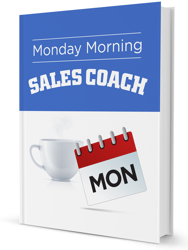Begin With the End in Mind
Problem: The biggest challenge salespeople face is closing more business. Typically, the problem is not the lack of closing skills per se, but rather the job they’ve done prior to the presentation and close. Would anyone disagree that the better the prospect is qualified, the easier the close will be?
Analysis: Old habits die hard. Most salespeople still can’t wait to make a presentation, so they take short cuts qualifying. When a poor job has been done qualifying, we find that presentations are weak, causing a low closing rate. There is a direct relationship between qualifying and closing. The better the job salespeople do qualifying, the higher the closing rate will be. So, when closing rates are low, we have to find ways to qualify more effectively.
Prescription: Stephen Covey, in his great book, “The Seven Habits of Highly Effective People,” suggests that we begin a project with the end in mind. It’s good advice when you’re trying to find the prospect’s pain. Let’s examine how this might work in selling.
Fast forward to your presentation. Let’s pretend you had to give a presentation right now to a group of ten prospects from different companies whom you had not had a chance to qualify beforehand. You don’t know what their issues are. You’d have to tell them about every problem that your products or services address, wouldn’t you? You couldn’t leave anything out. You’d lead with your most important features and continue right down to your least important. You’d discuss each feature, its benefits and how it solves the problem. If you’re like most salespeople, you can do that in your sleep. And, if you got a chance to do that, it would probably be an excellent presentation, at least to this group of people whose pains have yet to be determined.
However, not all the issues would be important for each person. Chances are there would be some commonality, but most would have their own unique set of challenges. Some of the information you presented would be irrelevant and your presentation would lose some of its effectiveness.
Make a list of the problems that your product or service addresses and use them as a checklist when you’re qualifying. Your job then becomes one of asking questions to see which ones are important to the prospect and why. Then, when the time comes to make a presentation, your focus narrows only to those issues that are important to the prospect. Your presentation, therefore, is targeted and effective. Everything important is included and all irrelevant issues are omitted. That’s a perfect presentation. Try it and watch your closing rate soar.


